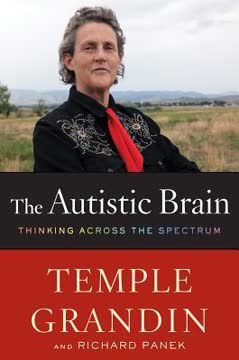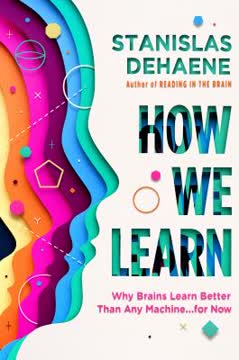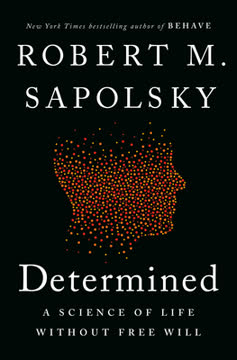Key Takeaways
1. The Brain is an Incredibly Complex Computational Device
"The brain is an astonishingly complex computational device that constructs our perception of the external world, generates our inner experience, and controls our actions."
Computational Complexity. The human brain contains approximately 86 billion neurons that communicate through precise synaptic connections. These neural networks enable extraordinarily sophisticated information processing, allowing us to perceive, think, feel, and act.
Neural Communication. Neurons communicate through electrical signals called action potentials, which travel along axons and release neurotransmitters at synapses. This intricate signaling system allows for:
- Rapid information transmission
- Complex computational capabilities
- Dynamic adaptation to environmental changes
- Learning and memory formation
Adaptive Plasticity. The brain's neural connections can be modified by experience, injury, and disease, demonstrating its remarkable ability to reorganize and adapt. This neural plasticity underlies our capacity for learning, recovery, and individual variation.
2. Brain Disorders Reveal How the Mind Normally Functions
"As surely as the components of a computer reveal their true functions when they break down, so the functions of the brain's neural circuits become dramatically clear when they falter or fail to form correctly."
Disorder as a Window. Brain disorders provide unique insights into normal brain functioning by revealing how disruptions in specific neural circuits affect cognitive, emotional, and behavioral processes. By studying these disruptions, scientists can better understand the intricate mechanisms of healthy brain function.
Key Research Approaches:
- Genetic studies identifying disorder-related mutations
- Brain imaging technologies
- Animal models of human neurological conditions
- Comparative analysis of neural circuit variations
Holistic Understanding. Studying brain disorders allows researchers to:
- Map neural circuit functions
- Identify genetic and environmental risk factors
- Develop targeted treatment strategies
- Comprehend the biological basis of human experience
3. Our Social Brain Emerges Through Neural Circuits
"We are by nature intensely social beings. Our success in adapting to the natural world over the course of evolution has resulted in large part from our ability to form social networks."
Social Brain Network. Humans possess specialized neural circuits dedicated to social interaction, including regions responsible for:
- Face recognition
- Emotional processing
- Theory of mind
- Empathy
- Biological motion perception
Developmental Significance. Social interaction is critical for brain development, with early social experiences shaping neural circuit formation. Children require social engagement to develop essential skills like language and emotional regulation.
Evolutionary Adaptation. The social brain emerged as a crucial survival mechanism, enabling complex communication, cooperation, and collective problem-solving across human societies.
4. Emotions and Memory Fundamentally Shape Our Sense of Self
"Our emotions are coordinated by the amygdala, a structure that connects our perception, memory, and sense of identity."
Emotional Architecture. Emotions are regulated by interconnected brain structures including:
- Amygdala (emotion orchestration)
- Hypothalamus (physiological responses)
- Prefrontal cortex (emotional regulation)
Memory as Identity. Memory storage and retrieval are fundamental to maintaining our sense of self, with different brain regions responsible for:
- Short-term memory
- Long-term memory
- Emotional memory
- Procedural memory
Neuroplastic Transformation. Emotional experiences and memories continuously reshape neural connections, dynamically constructing and reconstructing our personal identity.
5. Consciousness is Constructed Through Unconscious Processes
"All conscious perception depends on unconscious processes. We cannot understand consciousness without understanding that complex, unconscious mental processes pervade conscious thought."
Multilayered Consciousness. Consciousness emerges through complex interactions between:
- Unconscious information processing
- Sensory input
- Memory retrieval
- Emotional evaluation
Global Workspace Theory. Consciousness involves broadcasting unconscious information across neural networks, making it accessible to different brain regions.
Cognitive Integration. Our brain constantly constructs reality by:
- Selecting sensory information
- Interpreting based on past experiences
- Creating coherent perceptual narratives
6. Creativity Emerges from Loosening Cognitive Inhibitions
"Creativity results in part from a loosening of inhibitions and the unconscious creation of new associations in the brain."
Neurological Creativity. Creative processes involve:
- Reduced left-hemisphere inhibition
- Enhanced right-hemisphere connectivity
- Increased unconscious associative thinking
- Decreased cognitive constraints
Brain Plasticity. Creativity can emerge from:
- Neurological differences
- Brain damage
- Psychiatric conditions
- Altered neural circuit functioning
Unconscious Processing. Creative insights often arise from:
- Allowing mind-wandering
- Reducing conscious filtering
- Embracing unexpected connections
7. Decision Making Relies on Both Conscious and Unconscious Processes
"Emotion is integral to any personal, social, or moral decision we make."
Dual Processing. Decision-making involves:
- Unconscious, rapid intuitive processing
- Conscious, deliberative reasoning
- Emotional evaluation
- Risk assessment
Neurological Mechanisms. Decision-making circuits involve:
- Prefrontal cortex
- Limbic system
- Emotional processing regions
- Memory retrieval networks
Evolutionary Adaptation. Our decision-making processes evolved to:
- Rapidly assess threats
- Make quick survival judgments
- Balance emotional and rational inputs
8. Our Brain's Reward System Governs Pleasure and Addiction
"Addiction creates havoc in people's lives by robbing us of our will and ability to select freely among possible courses of action."
Dopamine Dynamics. The brain's reward system involves:
- Dopamine neurotransmission
- Mesolimbic pathway
- Nucleus accumbens
- Conditioning mechanisms
Addiction Mechanisms. Substance abuse disrupts:
- Neural reward circuitry
- Dopamine receptor sensitivity
- Habit formation processes
- Emotional regulation
Biological Vulnerability. Addiction results from complex interactions between:
- Genetic predispositions
- Environmental triggers
- Neurochemical changes
- Personal experiences
9. Sexual Differentiation and Gender Identity Are Biologically Rooted
"Gender identity has a biological basis and can diverge from anatomical sex during prenatal development."
Neurological Sexual Development. Sexual differentiation involves:
- Genetic triggers
- Hormonal influences
- Neural circuit formation
- Brain structure variations
Gender Identity Mechanisms. Factors influencing gender identity include:
- Chromosomal configurations
- Hormone exposure
- Neural circuit development
- Individual experiences
Biological Complexity. Gender identity emerges through:
- Intricate genetic interactions
- Hormonal programming
- Neural network formation
- Developmental plasticity
10. Brain Disorders Offer a Path to Understanding Human Nature
"Understanding the biology of brain disorders is part of the continuous attempt of each generation of scholars to understand human thought and human action in new terms."
Scientific Humanism. Brain disorder research provides:
- Insights into neural functioning
- Understanding of human variation
- Compassionate perspective on differences
- Biological basis for individual experiences
Interdisciplinary Approach. Studying brain disorders involves:
- Genetics
- Neuroscience
- Psychology
- Cognitive research
Transformative Potential. Brain disorder research can:
- Develop personalized treatments
- Enhance medical understanding
- Reduce stigma
- Celebrate human neurological diversity
Last updated:
FAQ
What's The Disordered Mind about?
- Exploration of brain disorders: Eric R. Kandel examines various brain disorders, including autism, depression, bipolar disorder, schizophrenia, Alzheimer’s, and Parkinson’s, to understand their impact on the mind and behavior.
- Biological approach to mind: The book emphasizes a biological perspective, suggesting that understanding these disorders can illuminate normal brain functions and improve treatments.
- Interconnection of mind and body: Kandel argues that mental processes are deeply rooted in the brain's biological functions, challenging traditional mind-body relationship views.
Why should I read The Disordered Mind by Eric R. Kandel?
- Insightful scientific research: The book synthesizes scientific research and personal reflections, making complex neuroscience accessible to a general audience.
- Understanding human behavior: It provides insights into how brain disorders shape behavior, emotions, and creativity, enhancing empathy and understanding.
- Advancements in treatment: Readers learn about the latest treatment advancements and potential new therapies based on a deeper understanding of brain function.
What are the key takeaways of The Disordered Mind?
- Mind as a biological process: Kandel posits that the mind is a set of processes carried out by the brain, emphasizing the biological basis of mental functions.
- Importance of early intervention: The book highlights the significance of early intervention in brain disorders for better outcomes.
- Creativity and mental illness: Kandel explores the relationship between creativity and mental disorders, noting shared genetic factors influencing social behavior.
What are the best quotes from The Disordered Mind and what do they mean?
- "Know thyself": This ancient maxim underscores the theme of self-awareness and understanding human nature through neuroscience.
- "I am, therefore I think": Illustrates the modern understanding that existence and biological processes shape thoughts and consciousness.
- "The mind is like an iceberg": Suggests that much of our mental processes are unconscious, highlighting the mind's complexity.
How does The Disordered Mind explain the relationship between brain disorders and creativity?
- Creativity linked to disorders: Kandel discusses how disorders like schizophrenia and bipolar disorder can lead to unique creativity due to altered brain connections.
- Neural circuits and creativity: Disruptions in typical brain circuitry can free up creative potential, allowing novel connections and artistic expression.
- Art as expression: Art by individuals with mental disorders is a profound expression of their unique experiences, not merely a reflection of illness.
What insights does The Disordered Mind provide about decision-making?
- Role of emotion in decisions: Emotions play a crucial role in decision-making, often operating unconsciously.
- Adaptive unconscious: The adaptive unconscious processes information and influences decisions without awareness, leading to quicker decision-making.
- Conscious vs. unconscious processing: Conscious thought can override unconscious impulses, allowing for more rational decision-making.
How does Eric R. Kandel explain the biological basis of mental disorders in The Disordered Mind?
- Genetic and environmental interactions: Both genetic predispositions and environmental factors contribute to mental disorders.
- Protein misfolding: Disorders like Alzheimer's and Parkinson's are linked to misfolded proteins causing neuronal death and dysfunction.
- Neurotransmitter imbalances: Imbalances in neurotransmitters like dopamine significantly affect mood, behavior, and cognitive function.
What does The Disordered Mind say about the treatment of brain disorders?
- Personalized medicine approach: Kandel advocates for treatments tailored to individual genetic profiles for more effective interventions.
- Integration of neuroscience and psychiatry: Understanding the brain's biology is essential for developing effective treatments.
- Importance of early intervention: Early intervention can prevent symptom progression and lead to timely, effective treatment strategies.
How does The Disordered Mind explore the concept of gender identity?
- Biological basis of gender identity: Gender identity is influenced by biological factors, including hormonal exposure during fetal development.
- Transgender experiences: Personal narratives illustrate the complexities of gender identity and challenges faced during transition.
- Sexual dimorphism in the brain: Structural differences in male and female brains may contribute to variations in behavior and identity.
What are the biological mechanisms behind depression as discussed in The Disordered Mind?
- Neurotransmitter involvement: Depression is linked to changes in serotonin and noradrenaline levels, crucial for mood regulation.
- Cortisol's role: Prolonged stress leads to excessive cortisol release, damaging synaptic connections and contributing to depressive symptoms.
- Neural circuit disruptions: Dysfunction in specific brain regions leads to mood disorders.
How does The Disordered Mind address the treatment of schizophrenia?
- Antipsychotic medications: These drugs alleviate positive symptoms by blocking dopamine receptors in the brain.
- Cognitive therapy: Psychotherapy helps manage symptoms and improve quality of life.
- Early intervention strategies: Cognitive therapy can build resilience and reduce the likelihood of developing full-blown schizophrenia.
What future directions does Eric R. Kandel suggest for research in The Disordered Mind?
- Advancements in brain imaging: Brain imaging technologies can enhance understanding of mental disorders and consciousness.
- Genetic research: Identifying specific genes associated with mental disorders could lead to better prevention and treatment strategies.
- Interdisciplinary approaches: Collaboration between neuroscience, psychology, and psychiatry can lead to more effective interventions and a deeper understanding of the mind.
Review Summary
The Disordered Mind explores various brain disorders and their impact on human behavior and cognition. Readers appreciate Kandel's accessible writing style, comprehensive overview of neuroscience, and integration of patient perspectives. The book covers topics like autism, depression, schizophrenia, and addiction, emphasizing the biological basis of mental disorders. While some found it informative and fascinating, others criticized its reliance on animal testing and lack of new information. Overall, it's considered a valuable resource for understanding the intersection of brain physiology and psychology.
Similar Books
Download PDF
Download EPUB
.epub digital book format is ideal for reading ebooks on phones, tablets, and e-readers.









